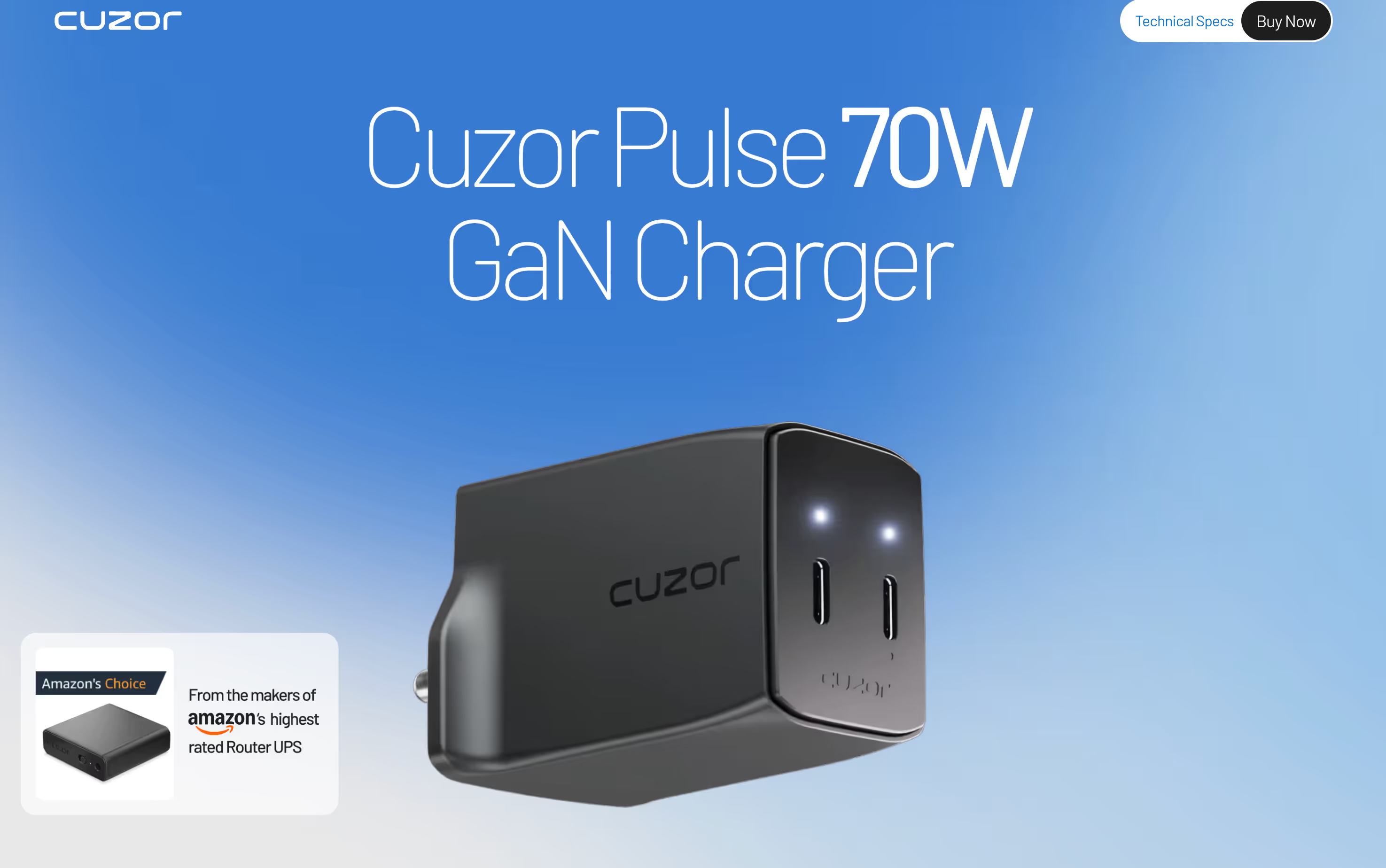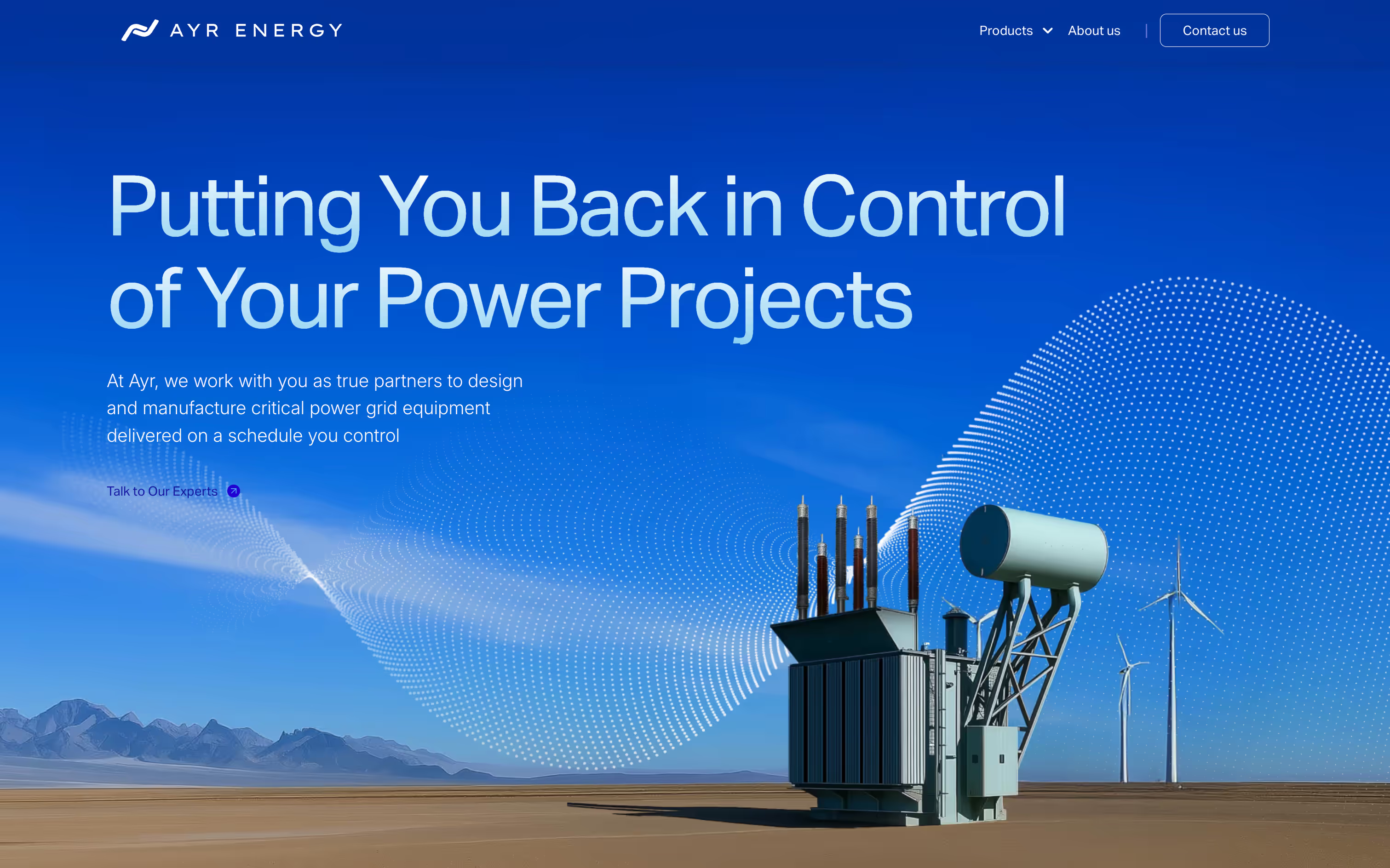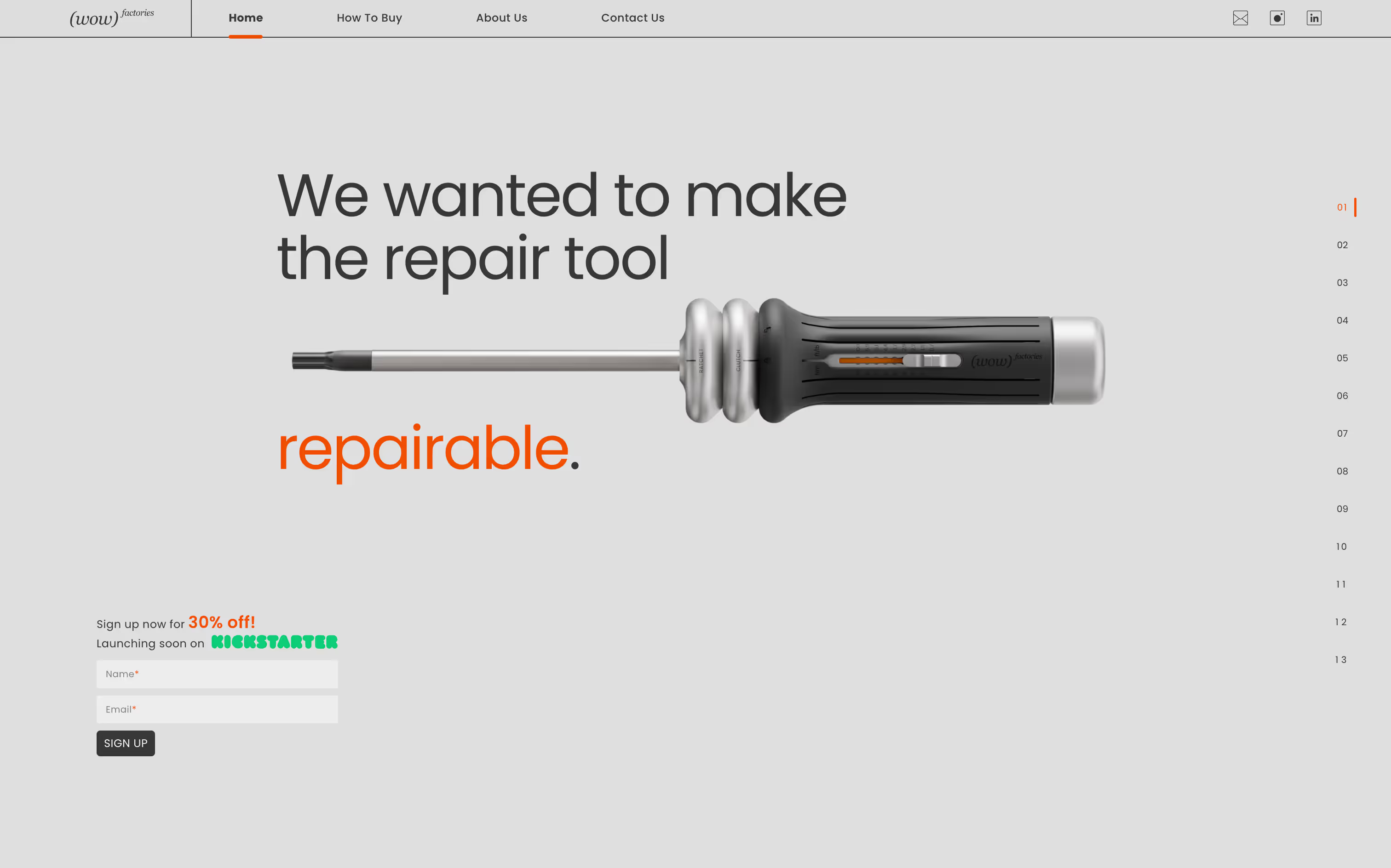Semiconductor Brand Website Agency
Companies in the semiconductor industry, much like those in any other sector, need a website for several critical reasons that go beyond mere online presence.
Semiconductor Design Projects
A professional website helps semiconductor companies stand out, nurture leads, support complex B2B sales, and maintain strong industry positioning in a competitive global market.
Top agencies for semiconductor companies focus on intuitive UX, brand differentiation, and targeted digital strategies that drive measurable growth and high-quality engagement.
Semiconductor Design Clients





Overview of Semiconductor Websites
The following list of semiconductor companies highlights their online presence through diverse website approaches. Agnitsemi features a straightforward homepage, emphasizing their core competencies in semiconductor innovation. Aura Semiconductor presents a sleek design with intuitive navigation to showcase their analog and mixed-signal products. Blueberry Semiconductors Private Limited takes a modern approach, focusing on their engineering solutions for semiconductor design. Calligo Technologies delivers a clear, professional layout, emphasizing their technology offerings and services. Chipspirit Technologies showcases their advanced IC design solutions through a simple, direct website interface.
Cientra highlights their product solution capabilities with a clean and product-oriented site. FermionIC Design uses a minimalist style to effectively present their specialized IC design services. InCore Semiconductors highlights their focus on processor design with a straightforward yet informative approach. Mindgrove showcases their System on Chips (SoCs) with a compelling argument for their unique advantages. Morphing Machines provides information on their REDEFINE silicon chip, tailored to a diverse audience interested in innovative silicon solutions.
Netrasemi uses an approachable website structure to highlight their semiconductor expertise. Oakter presents a wide variety of home automation products with an inviting and consumer-friendly design. Saankhya Labs prominently showcases their software-defined radios (SDR), emphasizing their pioneering innovations. Sensesemi Technologies highlights their innovative IoT solutions for healthcare and industrial applications. SignOff Semiconductors offers a user-friendly website featuring their semiconductor and electronic design services.
Silizium Circuits presents a clean, minimalistic approach to showcase their expertise in mixed-signal IC solutions. Terminus Circuits provides insights into their high-performance analog and RF solutions. VASBEAM demonstrates their contribution to the ecosystem from ASIC design to complete systems, through an informative and straightforward layout. Lastly, Vervesemi emphasizes their innovative semiconductor products with a clear and professional interface.
Links to Websites
- Agnitsemi
- Aura Semiconductor
- Blueberry Semiconductors Private Limited
- Calligo Technologies
- Chipspirit Technologies
- Cientra
- FermionIC Design
- InCore Semiconductors
- Mindgrove
- Morphing Machines
- Netrasemi
- Oakter
- Saankhya Labs
- Sensesemi Technologies
- SignOff Semiconductors
- Silizium Circuits
- Terminus Circuits
- VASBEAM
- Vervesemi
Companies in the semiconductor industry, much like those in any other sector, need a website for several critical reasons that go beyond mere online presence. Here are key motivations for semiconductor companies to maintain an effective website:
1. Showcasing Expertise and Capabilities
Semiconductor companies operate in a highly specialized field, often dealing with advanced technologies and intricate products. A website serves as an essential platform to showcase their technical expertise, capabilities, and range of services or products. Through detailed content, such as product pages, case studies, and engineering insights, companies can establish themselves as industry leaders and effectively communicate their technological competencies to potential customers, partners, and stakeholders.
2. Customer Engagement and Lead Generation
Even in specialized sectors like semiconductors, potential customers begin their journey online. A well-designed website helps generate leads by providing detailed information about the company’s offerings, application areas, and advantages. Contact forms, product inquiries, and whitepaper downloads offer opportunities to capture leads and engage potential clients who may be exploring possible partners for their supply chain or design needs.
3. Building Credibility and Trust
Given the high stakes in the semiconductor industry, involving precision engineering and long-term contracts, trust and credibility are crucial. A professional, updated website helps build this trust. It demonstrates that the company is legitimate, modern, and capable of meeting industry standards. Featuring client testimonials, certifications, and partnerships can help convince prospective clients of the company’s reliability and quality.
4. Information Sharing and Education
Semiconductor companies are often involved in research and development that leads to innovative technologies and products. A website serves as a platform to share these advancements, whitepapers, industry news, and product specifications. Educational content, such as blogs, webinars, or case studies, helps position the company as a thought leader and keeps clients and partners informed about new solutions and industry trends.
5. Facilitating Partner and Supplier Networks
Many semiconductor companies work in a B2B ecosystem involving suppliers, partners, and other manufacturers. A comprehensive website helps clearly communicate to other businesses what specific areas of collaboration are possible. This is particularly valuable for complex supply chains where companies need to quickly determine which suppliers or partners can provide specific components or services.
6. Talent Acquisition
The semiconductor industry relies on top-tier talent, such as skilled engineers and researchers, who are also likely to evaluate prospective employers based on their online presence. A website with a dedicated careers section allows semiconductor companies to attract qualified talent by providing insight into their work culture, technologies used, and available opportunities.
7. Global Reach and Expansion
The semiconductor industry is inherently global, with customers, suppliers, and partners located across different continents. A website allows semiconductor companies to have a consistent and reliable platform accessible from anywhere in the world, supporting international business development, reaching new markets, and providing a common point of reference regardless of geographic location.
8. Product and Service Differentiation
The semiconductor market is competitive, with many players offering similar products and services. A website helps these companies stand out by highlighting their unique capabilities, whether it's proprietary technology, customization options, rapid prototyping, or customer-centric services. By communicating their unique value proposition effectively, they can differentiate themselves from competitors.
9. Support and Communication
Having a website allows companies to offer self-service information, customer support, and direct communication channels. It can include technical documentation, FAQs, product downloads, and dedicated contact options, making it easier for clients to find relevant information or reach out for assistance.
10. Establishing Brand Identity
Even in B2B spaces like semiconductors, brand identity is important. A well-crafted website helps articulate a company’s mission, values, and vision, enhancing its brand presence. It also helps align the company’s communication style with the target audience, making the brand relatable and authoritative within the industry.
In summary, a website is a critical component for semiconductor companies not only to showcase their offerings and capabilities but also to build credibility, engage customers, support international business, attract top talent, and differentiate themselves in a competitive market. It serves as a multi-faceted tool that aligns with both strategic growth and operational goals.
Here’s a detailed interpretation and summary of what Sachin from Cuzor Labs is saying in the testimonial video:
Detailed Breakdown of Sachin’s Testimonial for Everything Design
1. Positive Overall Experience
Sachin opens with praise for Everything Design, especially mentioning how they dig deep and understand projects broadly before starting work.
2. Background and Ambition
He shares his personal journey from Karnataka, noting his time in Bangalore and over a decade in India’s IT sector. Sachin reflects on how product companies from China and the US have empowered their countries through innovation, but in India, most consumer electronics are still imported. Cuzor Labs set out specifically to change this perception by building meaningful technology locally.
3. GaN Charger Launch & Broader Vision
Recently, Cuzor launched its first gallium nitrate (GaN) chargers—moving from a niche space to addressing a larger market and competing with major global brands.
4. Moving Beyond “Painkiller” Products
He discusses a philosophical shift:
- Traditionally, UPS devices are bought to solve a problem (“painkiller”), rather than being seen as lifestyle essentials.
- Cuzor wanted to make accessories like chargers not just utilitarian, but desirable—integrating them into users’ everyday life and aesthetic settings.
5. Design Details & User Experience
Sachin highlights specific design elements, such as glowing pulsating LEDs, that Everything Design helped visualize.
- He wanted users to “feel” the technology visually—even before buying.
- Everything Design created features like breathing LEDs that indicate different power states and produced videos to showcase these design traits.
6. The Design Process & Agency Collaboration
He appreciates that the agency:
- Understood the core philosophy behind Cuzor Labs.
- Took extensive notes, absorbed the technical nuances, and translated them into marketing language that is both beautiful and subtle—bridging the gap between technical superiority and user benefit.
Sachin notes that many companies fail to communicate the user-facing benefits of technology, but Everything Design excelled in translating engineering features into emotionally resonant messaging.
7. Iteration, Research & Competitive Analysis
He describes a thorough process involving:
- Sketching and multiple discussions.
- Competitive research (how others position similar products).
- Defining what the GaN charger stands for as a brand.
- Two to three rounds of philosophical and visual alignment followed by detailed design work.
8. Addressing Differences & Collaboration Style
Sachin points out that even when they had differences of opinion, Everything Design provided well-researched reasoning and focused discussions on customer perception and desired brand image—rather than just debating right or wrong.
He found this approach refreshingly collaborative, always prioritizing the intended user perception.
9. Impact and Outcome
Sachin shares that when showing their new website or page to others, there’s a strong emotional connection—people actually want to buy the product.
- The design builds trust, feels personal, and inspires purchase decisions.
- These aspects get “100 out of 100” in his review.
He mentions that the design resonated not just internally, but also with partners in the US and others they shared it with.
- Positive feedback was universal.
- Sales results are reflecting the success.
- The almost three months of “homework” and effort are clearly showing results.
Core Themes from the Testimonial
- Deep Understanding: Everything Design takes the time to understand the founding philosophy and technical aspects before moving to sketches or visual design.
- From Technology to Lifestyle: Their work helped Cuzor move away from being just a “painkiller” product to a lifestyle accessory people want to own.
- User-Centric Messaging: Technical features are translated into user benefits through subtle and powerful marketing language.
- Collaborative Approach: Disagreements led to constructive discussions focused on customer perception and building emotional connections.
- Measurable Impact: The process resulted in strong market feedback, partner enthusiasm, and tangible sales growth.










